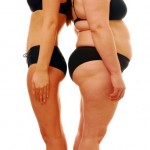Weight Loss – With The Atkins Diet
What if I told you you’d able to eat all the juicy steaks, succulent seafood with butter and bacon and cheese omelettes and still lose massive quantities of weight? What if I also explained to you that you wouldn’t necessarily have to exercise to lose this weight? If I’ve got your attention and you’re willing to take the plunge, let me introduce you to the Atkins diet. The Atkins diet is known as a Standard Ketogenic Diet. The term ketogenic refers to the fact that your body must enter ketosis in order for this diet to work. Ketosis is when your body and more so your brain stops using glucose (sugar) to function and now adapts to using ketones. Is it safe? Well it’s a diet that has been used as far back as the 60s by bodybuilders to shed unwanted fat. The mistake most people make is assuming that this is a fairly new diet while all that’s really happened is that it’s become more main stream in the last decade or so. Many studies have been done not only on the long term effects but also on the overall efficiency of this diet and they all conclude that it does indeed work and there are no apparent short term health risks.
Before taking the Atkins diet for a test run you should contact your personal physician and talk it over with them. The initial stage of the Atkins diet is the hardest as it is the time when your brain tries to adapt to using ketones. Most people encounter a sort of brain fog where they feel a little lethargic and may encounter headaches. After the first 2 weeks this will subside and you’ll feel even better then you felt before. The first thing you’ll need to buy is ketone sticks. They sell them at most pharmacies and they are a vital part of your diet as they are the only indication of if you are in ketosis. The first stage of the Atkins diet is the induction phase and it last 2 weeks. This is where you will see the most significant weight loss while on the diet. After this phase is through you’ll evaluate if you’d like to stay in this phase or if you’d prefer to add some carbohydrates back into your diet and taper off the massive weight loss. First let’s look at how to get you into ketosis.
Both entering into and maintaining ketosis is amongst the most misunderstood aspects of the Atkins diet. Many people have a difficult time getting into ketosis and while in it they don’t quite understand what it is they’re doing to be knocked out of it. The ratio of protein to fat is what causes this confusion and the lack of explanation on this critical issue is why most people never succeed on this diet. When attempting to enter ketosis you must keep your daily protein intake at no more then 20%. Your fat intake must be at no less then 80% while your carbohydrate intake must remain at 0! Yes that is correct you can’t have any carbohydrates at all until you have successfully entered ketosis. This initial stage usually lasts 2- 3 days. After you have entered ketosis in order to remain in ketosis you must change your ratios to approximately 5% from carbohydrates, 30% from protein and 65% from your fat intake.
In the induction phase you will be relegated to eating mostly cheese, eggs and meat but as you progress to the next phase you will be able to add vegetables and even the occasional fruit back into your diet. As I stated before the initial phase of this diet lasts 2 weeks and now you’re faced with the decision of continuing the induction phase or moving on to more of a maintenance phase where you’ll gradually increase your carbohydrate intake, until you’ve noticed you’re being knocked out of ketosis. At that point you will have determined how many carbohydrates you can handle while still being in ketosis. The Atkins diet is definitely not for everyone but if you do feel you can handle it you’ll be able to lose sizable amounts of weight with a minimal effort. You will experience energy levels that you never knew you had and most importantly you’ll never feel hungry or deprived.

Michael Russell
Your Independent guide to Weight Loss
- DON'T MISS
- 4 Steps to Preventing Childhood Obesity
- The Effects of Obesity on Society as a Whole
- The Top Ten Things You Don’t Want to Hear About Losing Weight
- A Coffee Diet? I’ve Heard It All Now!
- The Easy and Natural Way to Weight Loss
- Women are in Weight Gain Denial
- 3 Valuable Effects of the Mediterranean Diet Regimen
- Diets May Have Long Term Side Effects…Do You Know What They Are?
- Low Carb Diets – How Much Protein Do You Need
- Fad Diet Popularity




